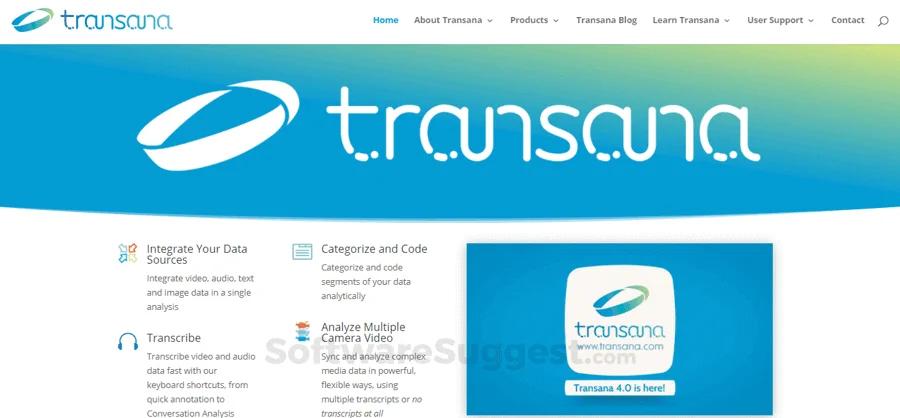Top 10 Qualitative Research Tools to Boost Your Research Game
Jan 05, 2026 - 8 minute read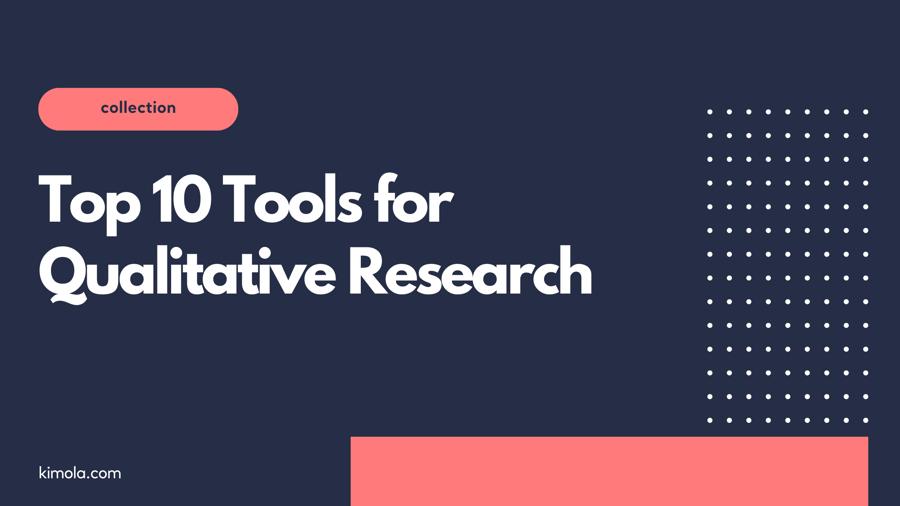
Qualitative research is a secret weapon for knowing what customers want and meeting their expectations. From the most essential point of view, qualitative research is a detailed research method that helps understand what is happening inside people's heads. Sometimes, you love a product, but you can't explain why you love it when asked; and that's what qualitative research is all about.
So why is it so important for brands? Imagine you have a brand; everything would be much easier if you knew exactly what your customers want, wouldn't it? This is precisely where qualitative research can help brands learn about their customers' feelings, thoughts and motivations and shape their products or services to appeal to them.
Now, we have tried more than 25 tools to help you find the best tools, and here are our favorites to elevate your qualitative research journey;
TOP 10 Tools for Qualitative Research
- Kimola (Sign up for free)
- Atlas.Ti
- Dedoose
- Maxqda
- Nvivo
- Qda Miner
- Quirkos
- Taguette
- Hyperresearch
- Transana
1. Kimola (Try for free)
If you want to learn about "Qualitative Research," you must have heard about Kimola, an AI-driven platform well-suited for qualitative data analysis. It will help process unstructured data such as text and audio and extract meaningful insights through machine learning algorithms. Its sentiment analysis and topic modelling capabilities make it an excellent choice for researchers who want to dive deep into qualitative data.
Kimola is a highly robust customer feedback analytics platform that enables you to collect reviews from 30+ channels and automatically analyze and classify customer feedback or textual data. Kimola performs data classification usingNLP and machine learning and delivers robust marketing materials such as executive summaries, SWOT analysis and product descriptions. Furthermore, Kimola requires no coding. It collects data from channels like Amazon, Trustpilot, Yelp and Etsy and classifies it in minutes. GPT integration can turn customer feedback analysis into social media themes, executive summaries, personas, FAQ's and more.
In conclusion, conducting qualitative research with Kimola is one of the most enjoyable ways to enter the world of customers.
Here is a list of what you can achieve with Kimola:
- Scrape reviews using the free browser extension
- Analyze user reviews without training; drag and drop
- Analyze user reviews with multi-labels
- Classify and analyze customer feedback using pre-built classifiers (there is a large gallery for each business!)
- Conduct sentiment analysis
- View the NPS score
- Extract popular terms and topics
- Search through customer reviews
- Create marketing materials based on customer reviews with GPT integration
- Generate personas, product descriptions, executive summaries based on customer reviews
- Train custom machine learning models by dragging and dropping Excel
- 7-day free trial (no credit card required)
- Basic plan: $49 / month
- Standard plan: $179 / month,
- Business plan: $359 / month
- Enterprise plans available for Larger Companies
See all plans & features of Kimola.

2. ATLAS.ti
ATLAS.ti provides comprehensive tools for encoding, annotating and managing text, audio and video data. It has visualization capabilities that make it easy to see patterns and relationships in data. ATLAS.ti allows you to analyze text-based, audio-visual or graphical data. It supports formats such as TXT, DOC, ODT, and PDF. It can automatically search multiple documents and supports various audio and video formats. It helps you perform literature searches by importing data from note-taking applications, social media platforms and reference managers.
The interface is clean and elegant. It is more accessible for collaboration. It also has powerful features like sentiment analysis and automatic coding.

3. Dedoose
Dedoose is a flexible tool that combines qualitative and quantitative data analysis. It benefits mixed methods research and allows users to analyze and visualize data from multiple sources.
Dedoose is a cross-platform cloud-based application that helps to analyze qualitative data and data from mixed methods research. It allows you to import data from different sources: Audio files, Video files, Text, Images, Surveys, and Assessments. As a cloud-based application, it offers broad accessibility, can be accessed from mobile devices and provides collaboration features such as simultaneous collaboration and control of access privileges. You can also visualize your data in the form of graphs, tables or drawings and export these files to your local storage.
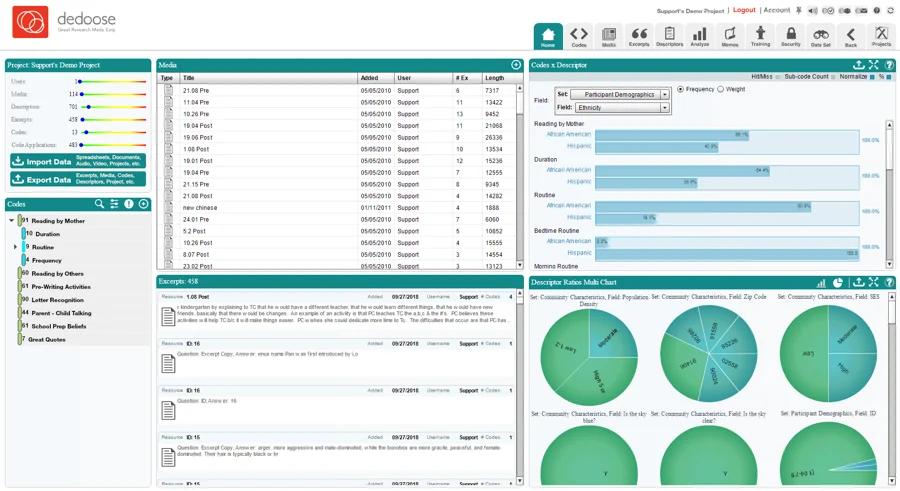
4. MAXQDA
MAXQDA is a marketed tool for qualitative, quantitative and mixed data analysis. This software allows you to access customer data in various formats, such as text, images, audio, video, websites, online posts, focus group discussions, surveys, etc., in one place. MAXQDA allows you to input data from surveys, interviews and focus groups. You can tag and categorize this data for analysis. You can leave comments for users to review so data can be easily organized and tracked.
It is very user-friendly and supports multiple languages. Additionally, it leverages artificial intelligence to assist users with audio transcription.

5. NVivo
NVivo is a software tool that enables researchers to organize and analyze their data. With NVivo, you can import various data types such as Word documents, PDFs, audio files, images and videos. NVivo also offers an automatic coding feature. It provides a great convenience to researchers with features such as automatic transcription and automatic coding. However, you may need help with NVivo, especially when working with languages containing characters. In addition, it has some limitations when working with large datasets. With NVivo, you can collect, organize, analyze and gain insights from different data sources. You can import various file types, such as videos, images, surveys, emails and spreadsheets. The interface is user-friendly and closely resembles Microsoft, making it instantly familiar and intuitive for many users.
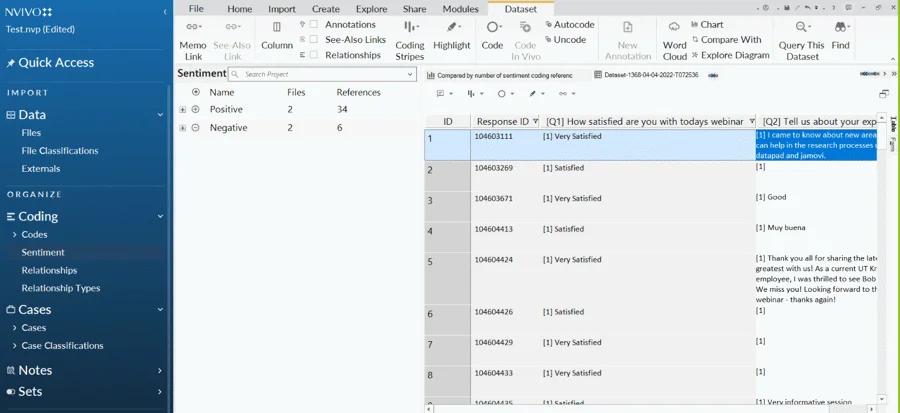
6. QDA Miner
QDA Miner is a software tool that helps analyze and manage qualitative data. With QDA Miner, you can import data from a variety of sources, such as documents, social media, emails, data files, surveys, transcripts and graphs. You can also create your codebook and use the ability to encode and annotate text and images on-screen. There is both a paid and a free version. In the free version, import, export and analysis functions are limited.
Released in 2020, the latest version of QDA Miner 6 can integrate with the leading data visualization tool, Tableau, to offer a wide range of visualization options. However, QDA Miner does not allow for collaboration, which can be a significant drawback if you work on data with a team. In the free version, the analysis functions and data import/export features are limited. However, it might be sufficient to get started or test the waters.
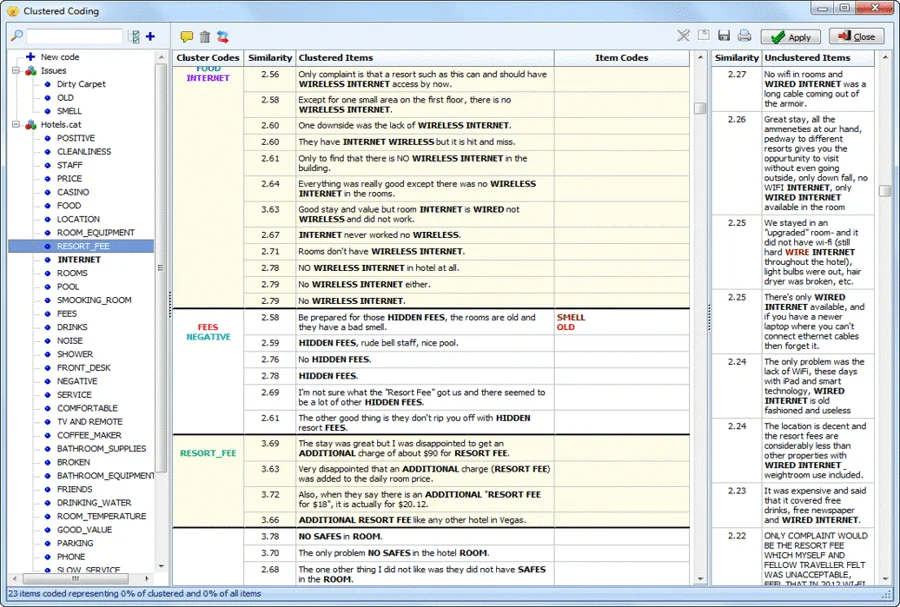
7. Quirkos
Quirkos is a tool that assists you with qualitative data analysis. It's particularly suitable for students and academics due to its affordability. It features drag-and-drop text functions and enables collaborative work by allowing simultaneous collaboration. Quirkos is an easy-to-use tool. However, this simplicity comes at the cost of fewer features. You may need to code your data manually. Quirkos offers three options: Student, Academic, and Commercial, with prices varying based on your preferences. If you need clarification on which software suits you, Quirkos provides a free trial. Additionally, it's budget-friendly.
Nevertheless, its simplicity means it offers fewer features. A large amount of data could be a disadvantage as you may need to code it manually. Moreover, it provides fewer import options compared to other software.
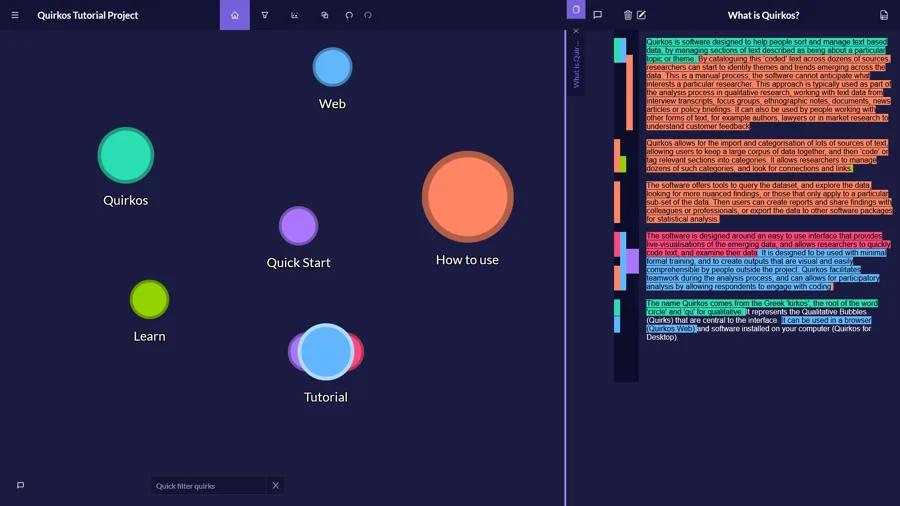
8. Taguette
With Taguette, you can analyze and organize text-based data. It is also a free and straightforward qualitative data analysis tool that allows you to tag your data and export it for analysis. There are online and local versions. It is open source. It is easy to use. However, its simplicity comes with some limitations. For example, it does not support images and videos. It has no automation features and cannot analyze your data.
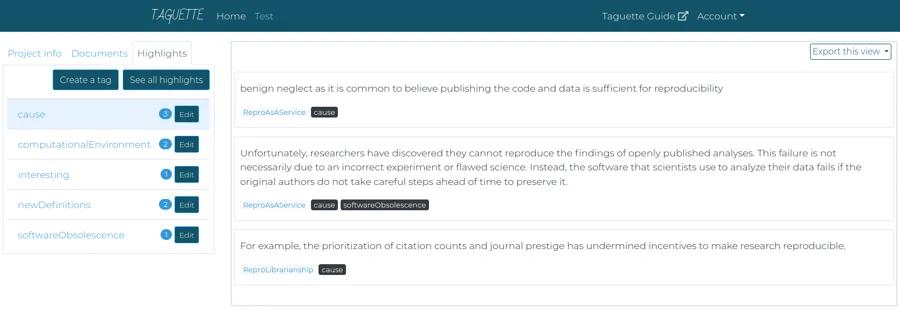
9. HyperRESEARCH
HyperRESEARCH is a software designed to conduct qualitative data analysis. It allows tagging, coding and analysis of various types of data such as text, audio, video or images from surveys and focus groups. Researchers can identify keywords on text documents and code these concepts. They can then use these codes to analyze them. It allows you to compare feedback from different groups. The program is also compatible with audio files, video files and graphics. However, some users may find HyperRESEARCH's interface complex. Additionally, compared to other qualitative data analysis tools, HyperRESEARCH may need to offer more advanced features or analysis options.

10. Transana
Transana is software for analyzing video and audio data. With Transana, you can integrate multiple data sources, such as text, images, video, and audio. You can quickly transcribe from video and audio sources by categorising and coding data segments. You can also collaborate in real-time.
Transana can also analyze complex data, such as multi-camera video files without transcripts. It is qualitative analysis software frequently used by research teams in academic institutions, research firms, non-profit organizations, and commercial enterprises. However, Transana has limited features. This can be disadvantageous for users who seek advanced analysis and visualization options.
